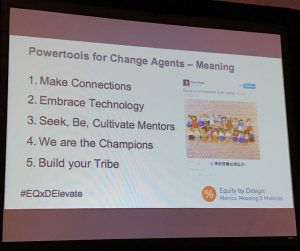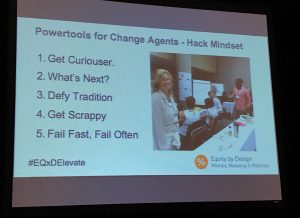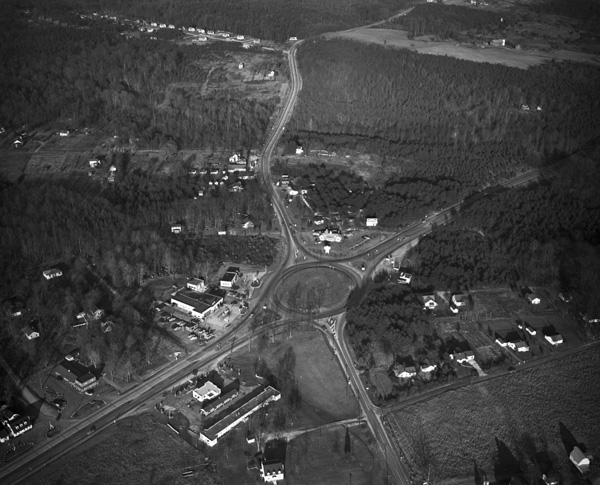I’m sitting in my hotel room in the Richmond Marriott writing this post and thinking back on the past two days of the Architecture Exchange East conference (but on by AIA Virginia and serving the Region of the Virginias).

This has been a great conference: I was energized Thursday morning by Rosa Sheng‘s keynote address on Equity in Architecture. She addressed many topics that hit close to home for me. She talked about how the study of the missing 32% was really just a “Canary in the Coal Mine” to indicate the issues that were facing the profession of architecture. She talked a lot about her own experiences and I felt a connection when she mentioned that at one point she was thinking about us leaving the profession when she had her daughter. While I don’t yet have children the reasons she mentioned are very similar to the issues I’ve been dealing with the past year or so – a need to be able to engage at hours outside of core working hours, a need for health accommodations, a need for architects to fight for their worth and negotiate on salary and benefits. She also talked about the value of engaging and enriching work – something I feel like I’ve been lacking for a while.

All of this set the tone for the rest of the conference for me. I saw similar themes in this afternoon’s presentation by Carolyn Rickard-Brideau about the Well Standard and Salutogenic Design and how this new certification (currently only for offices) will help to make Architecture that heals us, instead of hurts us. In 2015 I was diagnosed with Type II Diabetes, I’ve been working with my doctor as well as a nutritionist to lose weight, be more active and overcome this disease. One of the biggest factors for me in this diseas has and continues to be work. The stress and long hours of my job have played havoc with my blood sugar. The time demands of the job and meetings have made it hard to schedule doctor’s appointments on a regular basis, and when I am able to, there’s a ton of stress that goes with it. When I changed jobs this summer it was with the express purpose of minimizing stress and increasing my ability to get physical activity. Being able to work in an environment that was designed to minimize stress and encourage activity It would be a big step forward in combating a health issue that many Americans face. Tying this point into the earlier keynote, I might not need the flexibility I do right now if my work environment was Salutogenic instead of Pathogenic.

The capstone on the weekend was a closing Keynote by Mickey Jacob, FAIA who talked about elevating our role in leadership. One of the points that stuck home to me was that he mentioned that he is a “digital tourist” and not a “digital native.” This made me realize that the issue at heart right now in architecture is one of “Physical Natives” versus “Digital Natives”. Architects in my generation are digital natives, we look to technology to solve our problems. We time shift our entertainment and expect to be able to do the same with our work. We expect our work to embrace the new technological opportunites that we have already accepted. But the thought and practice leaders are physical natives. They may be skilled at software based design and work practice, but they remember a time before the technological revolution. To them face to face work in the physical realm is sacrosanct. They cannot imagine that any digital solution will be as good as the physical, if not a better solution. Yes, they may have accepted CAD as the new way to draft, but BIM is still just a step too far into digital magic. And, while that is an overexaggeration (there are some young people who are luddites and will only sketch by hand and there are well seasoned professionals that are technophiles and tweet with the best of them) this typifies why we have the issues we are having. Why we are facing the lack of equity and why the demand for it is so jarring to some. We are demanding that the architecture profession catch up to the rest of the business culture. We are having our own culture clash.
So where does that leave me? Well, I’m not making any commitments, but if I do stay in architecture, it means that my 10 year plan needs to think about how best to find a firm or make my own that embraces the “startup” culture and committement to its staff as the future and an investment and not just resources to be spent on acquiring more profits.
